
Distance Learning with Museums. Distance learning allows students to engage with museums and galleries through virtual instruction.
- Subject:
- Fine Arts
- Visual Art
- Material Type:
- Teaching/Learning Strategy
- Author:
- VDOE Fine Arts
- Date Added:
- 04/25/2022

Distance Learning with Museums. Distance learning allows students to engage with museums and galleries through virtual instruction.

Check out how a Science 6 CLT from Arlington, Virginia partnered with the school librarian, resource teacher for the gifted (RTG), SPED teacher, and English Learner (EL) teachers to engage and support all students in a personal research project...remotely! We are sharing our project resources, experiences, and how this project personalizes distance learning.
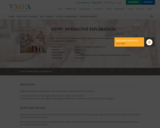
Who were the ancient Egyptians? Explore objects from ancient Egypt to discover how the Egyptians lived and what they believed in this Interactive Exploration featuring works of art from the VMFA's collection.
This resource consists of background information on Egyptian geography and climate, Egyptian life and society, role of the pharaoh, the purposes of ancient art, the role of scribes, hieroglyphics, the afterlife and mummification, Nubia (Egypt's southern neighbor), comparisons/contrasts to art from other parts of Africa, and a discussion on the legacy of Egyptian art (Egyptomania).
Woven throughout the informational narrative are several different types of looking, thinking and learning activities, all of which call on students' observation and critical thinking skills as they closely examine selected art and artifacts. Reflection questions that encourage deep thinking are featured, along with clickable popups on images that further explain Egyptian art and society. Activities like "Look At This," "What's the Story," "Be the Scribe," will bring student engagement, reflection, and critical and creative thinking to any ancient Egypt lesson!
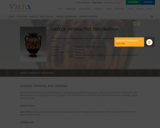
Who were the Ancient Greeks? Explore more about the Ancient Greeks and what they valued as a society in this Interactive Exploration.
This resource consists of two different types of looking, thinking and learning activities. These activities call on students' observation and critical thinking skills as they closely examine selected objects from Ancient Greece. The activities explore the themes of mythology, religion, sport, and trade.
The "Look at This" activities provide close-up views with guiding questions and background information. Students will learn more about what the ancient Greeks valued as a society.
The "Surprise Me" activities offer pop-up hot spots on selected objects to reveal intriguing information about Greek religion, gods, goddesses, trade, sport and mythology. Students will investigate how these objects relate to Greek religion and human need for protection from harm and healing from disease and injury.

Artists throughout time have come to their work with stories to tell, concepts to explore, and puzzles to work out. By taking time to look at a work of art with a curious and investigative eye, students can activate creative thinking to imagine and expand on the story it presents. Use this interactive exercise to guide students as they examine a work by Roslyn Drexler, creatively document the ideas it presents to them, and consider how their thoughts connect with the artist's own ideas and intentions.

Artworks can offer an opportunity to consider creativity in places and times that may be different from our own. Spending time to look carefully at the form, imagery, texture, and patterns of a work of art can help students consider and become curious about the materials and techniques, artistic conventions, and cultural contexts of unfamiliar objects. Use this interactive exercise to guide students as they examine an Ancient American work of art, document the ideas it presents to them, and consider how their thoughts connect with what we know about the artist's own ideas and intentions.

Spending time with a work of art can be an opportunity for thoughtful inquiry and ideation. Imagining what lies beyond the frame of an artwork gives students the opportunity to consider contextual clues and think about how artistic decisions are made.

Art is often about making ideas and beliefs visible. For centuries, religions across the globe have used images to represent complex and abstract ideas about humankind's place in the cosmos. Students can use this interactive exercise to spend thoughtful time with a religious work of art and become curious about the way art can help communicate sacred and profound ideas.
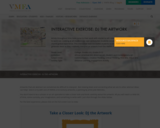
Artists throughout time have come to their work with stories to tell, concepts to explore, and puzzles to work out. Looking at art made in our own century lets students consider complex ideas about our shared global experience. This interactive exercise invites students to slow down their looking and generate ideas as they creatively interpret an artwork from the VMFA's 21st Century collection.

Art objects made and used in the past can offer clues to the ideas and attitudes that may have been prevalent at the time of their creation. Spending time to thoughtfully examine and explain their own ideas about such an object encourages students to become curious and open lines of inquiry about historical context. This interactive exercise guides students as they document their thinking about an 18th century American artwork.
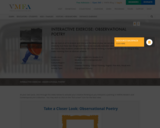
We can look at art to analyze and interpret the ideas at play; we can also use art as a prompt for creativity; but these two things don’t have to be mutually exclusive. Use this simple creative writing exercise to help students collaboratively use creative thinking in tandem with critical thinking as they make meaning from an abstract artwork.

This activity activates prior knowledge while developing insight into historical perspectives. Use this activity to help students broaden their horizons and explore diverse ideas.
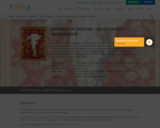
Artworks can offer an opportunity to consider different perspectives. Artists are intentional about how they depict people alone or in groups. Spending time to look carefully at expressions, body language, and contextual clues in figural artwork can help students consider ideas about identity, community, and belonging. Use this interactive exercise to guide students as they explore a work by Kehinde Wiley, creatively document the ideas it presents to them, and consider how their thoughts connect with the artist's own ideas and intentions.
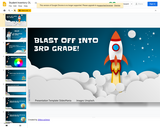
Model for an interactive introductory presentation for students who are distance learning. Created for 3rd graders, but can be adapted for other ages.